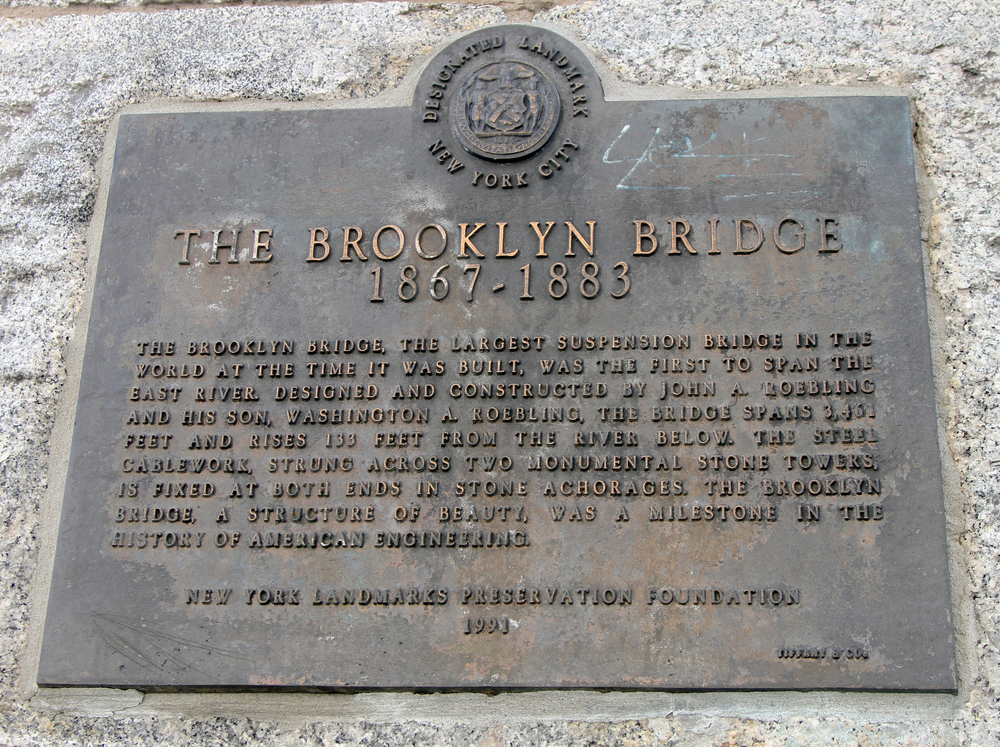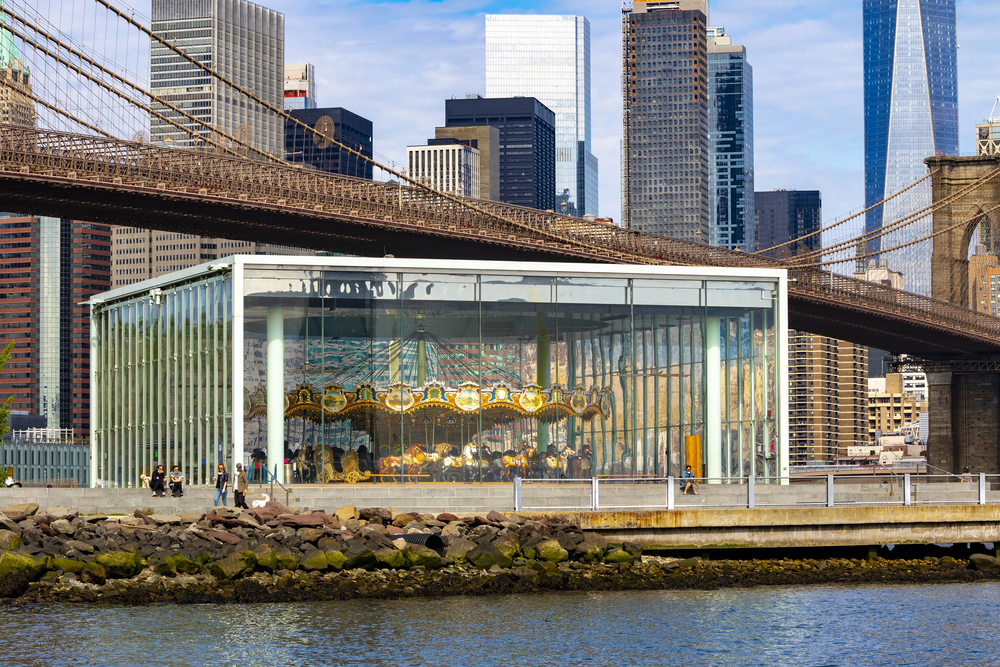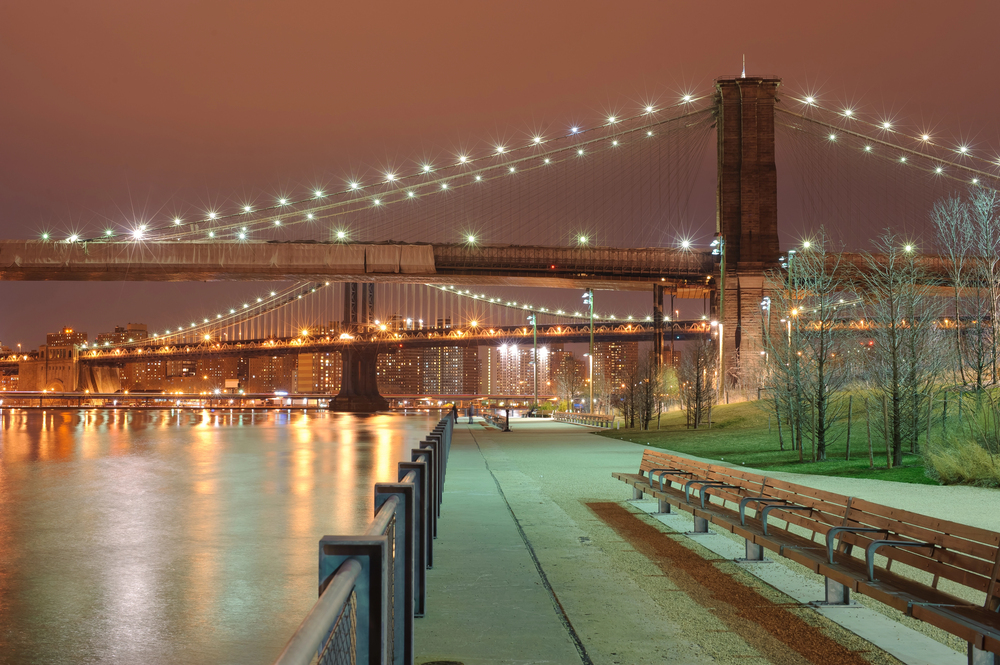Table of Contents
The iconic Brooklyn Bridge Park of today, spanning 85 acres along the East River waterfront, was once a busy industrial hub full of warehouses and railroad lines. But after years of decline, local residents advocated to transform those abandoned piers into the magnificent public green space we know and love. Brooklyn Bridge Park’s redevelopment is a story of community-led change that turned an decrepit industrial area into a world-class sustainable park.
Brooklyn Waterfront’s Industry
It’s hard to imagine now, but in the 17th century, the stretch of Brooklyn waterfront that is now Brooklyn Bridge Park was a major transportation hub and center of trade. Small ferries crisscrossed the East River, fueling the growth of Brooklyn’s earliest neighborhoods like Brooklyn Heights.
Things really took off after Robert Fulton launched his revolutionary steam-powered ferry service in 1814. Suddenly, traveling between Brooklyn and Manhattan was faster and more reliable than ever before. The Fulton Ferry became a vital link connecting the two boroughs.
To handle the growing ferry traffic and trade economy, enormous warehouses and railroad lines were constructed along the waterfront in the mid-1800s. The Empire Stores complex, a series of seven contiguous warehouses built between 1870 and 1885, stored tons of coffee and dry goods. The area was soon jam-packed with ships, railroads, factories, and storehouses – a buzzing industrial district dubbed “the walled city.”
But the opening of the Brooklyn Bridge in 1883 and the Manhattan Bridge in 1909 dealt a blow to Brooklyn’s waterfront industry. With new transit options connecting the boroughs, ferry ridership plummeted. Those grand old warehouses were abandoned as trade moved inland. The waterfront fell into disrepair and neglect for much of the 20th century.
Some shipping operations sputtered on until the 1980s, when the Port Authority ended cargo shipping on the Brooklyn piers. Those aging, graffiti-covered warehouses seemed destined for the wrecking ball. But local residents saw untapped potential beneath the rust and rubble.

Community Movement for a Park
When the Port Authority proposed selling the vacant Brooklyn piers to developers in the 1980s, community members advocated for a bold new vision – turning those decrepit piers into public parkland. Out of this grassroots movement, the Brooklyn Bridge Park Coalition was born (later renamed the Brooklyn Bridge Park Conservancy).
Through lobbying efforts and public meetings, this nonprofit organization worked to ensure the piers would become not just any park, but a grand green space focused on ecological sustainability and community programming.
After a lengthy planning process involving Brooklyn residents, the Illustrative Master Plan for Brooklyn Brige Park was released in 2000. And in 2002, New York State and City officials committed funding to construct what would become an iconic 85-acre park stretching along the East River waterfront.
To be financially self-sufficient, Brooklyn Bridge Park was designed to generate revenue through real estate developments along its edges. While controversial at first, this financial model allowed the park to incorporate world-class amenities without relying on taxes or private donations.
Designing an Iconic Park
Brooklyn Bridge Park contains several distinct sections, each with its own unique design and landscape features.
- Pier 1 offers harborside lawns and playgrounds nestled against the soaring Gothic arches of the Brooklyn Bridge.
- The Empire–Fulton Ferry section houses historic warehouses converted into a theater and restaurants.
- Pier 2 boasts basketball courts and concessions, while Pier 5 contains soccer fields and a marina.
Throughout the park, hills and native plants create diverse microclimates, providing habitats for birds and wildlife to thrive. The park’s pathways and sweeping promenades were carefully designed to maintain protected view corridors of the East River and Manhattan skyline.
Beloved attractions like Jane’s Carousel, the Tobacco Warehouse, and the Empire Stores were integrated into the park, preserving and showcasing these historic structures. The result is a one-of-a-kind public space that interweaves recreation, nature, and the arts.

Constructing Brooklyn Bridge Park
Bringing this ambitious vision to life was no easy feat. Construction began in 2008, a decade after the initial park plans were drafted. The project progressed slowly in phases as funding became available.
Pier 1 opened first in 2010, with other piers and sections debuting over the next decade. The park reached 90% completion by 2018. The final piece, a new plaza beneath the Brooklyn Bridge, was finished in late 2021 after years of planning disputes.
Unsurprisingly, erecting towering residential developments alongside the park was controversial. Several community groups filed lawsuits attempting to halt construction, though none succeeded in stopping the projects. Despite the legal battles, these buildings helped provide essential funding for the park’s ongoing upkeep.
Brooklyn Bridge Park Today
Today, Brooklyn Bridge Park hosts over 5 million visitors annually and is considered one of New York’s premier public spaces. Its well-loved amenities include waterfront pathways perfect for biking and strolling, free kayaking and stand-up paddle boarding on the East River, soccer fields and playgrounds, outdoor concerts in the summer, and spectacular vistas of passing ships, the Manhattan skyline, and the Brooklyn and Manhattan Bridges.
What was once a neglected industrial wasteland is now an urban paradise cherished for its lively community gatherings and rich ecological diversity along Brooklyn’s revitalized waterfront. Though realizing this vision took decades of advocacy and required controversial compromises, Brooklyn Bridge Park stands as a shining example of what engaged citizens can achieve when they come together and dare to reimagine their city.

Conclusion
The story of Brooklyn Bridge Park’s transformation from abandoned piers to iconic green space reflects the power of community-led change. What began as a grassroots campaign mobilized widespread support to convert crumbling warehouses into a beloved sustainable park that connects New Yorkers with the East River waterfront.
Creating this world-class park took years of collaboration and negotiation to balance public space, private funding, and community needs. The end result provides a gathering place cherished by residents and visitors alike, while also catalyzing redevelopment along Brooklyn’s formerly industrial waterfront.
Brooklyn Bridge Park demonstrates that when ordinary citizens advocate for their vision of a better city, they can achieve the extraordinary. This vibrant greenspace will continue serving future generations, thanks to dedicated people who saw beauty and potential where others saw only decay.
source https://sesamorestaurant.com/news/brooklyn-bridge-park-industrial-hub-to-urban-paradise/
No comments:
Post a Comment